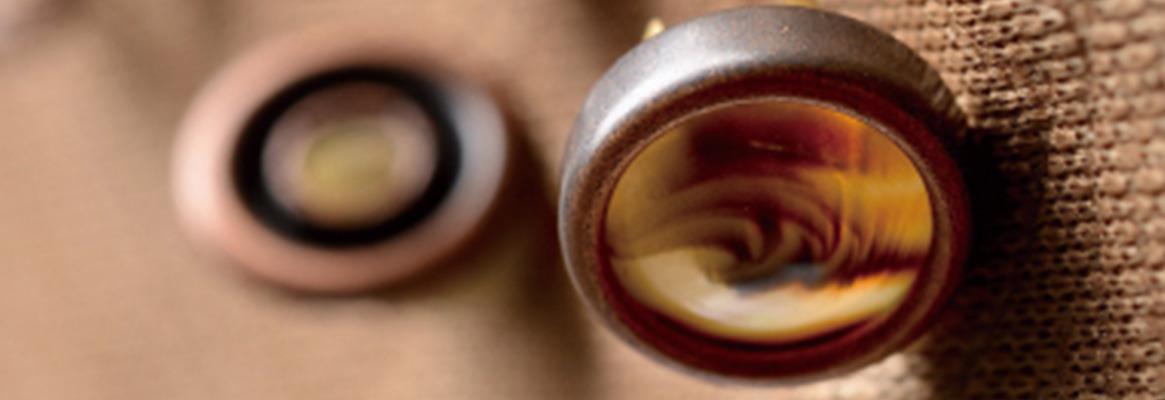Buttons were initially used as ornaments, decorative accents or seals. It was not until the 13th Century that they got widely used for fastening.
There are a wide assortment of garment buttons on the market. Generally speaking, these assorted buttons can be categorised based on the manufacturing material, manufacturing technique, ligne number, method of attachment or application.
Manufacturing Material
Depending on the manufacturing material, garment buttons can be grouped into such categories as:
-
Fabric Buttons
-
Metal Buttons
-
Natural Buttons
-
Plastic Buttons
-
Resin Buttons
Fabric buttons like mandarin buttons are widely used for cheongsam(Chinese traditional outfits).
Metal buttons are widely used on jackets, jeans and other similar denim or leather items. They can be made out of brass, zinc alloy, stainless steel, etc.
Natural buttons are also one of the most popular buttons. They can be manufactured out of different natural materials like wood, horn, shell, corozo, etc.
Plastic buttons are commonly used across the globe due to their easier manufacturing process and lower cost. They can be made of various materials like polyacrylonitrile, polyester, polyamide, etc.
Manufacturing Technique
Buttons undergo various manufacturing techniques for different purposes, such as stronger physical performances, metallic touch, burn effect, aesthetical appeal and so forth.
Below are some of the most commonly seen manufacturing techniques.
-
Coating
-
Digital Printing
-
Electroplating
-
Painting
Method of Attachment
Based on their different methods of attachment, garment buttons can be further classified into such categories as:
-
Flat Buttons/Shank Buttons
-
Rivets
-
Snap Fasteners
Flat buttons are mostly manufactured with 2 holes or 4 holes in the middle. Thread is sewn through the holes to attach them to the garments. They can be attached by the sewing machines. Shank buttons are characterized by a protruding shank in the rear. Thread is sewn through the shank to attach them to the garments. They are attached by hand.
Rivets which are used for decoration and reinforcement are permanent mechanical fasteners. They consist of 2 parts and are attached to the garments through certain device.
Snap fasteners consist of 2 couples-the female and male stud couples, each of which has one top and bottom side. These buttons are pinched through the fabric going in the middle.
Ligne Number
The ligne number like 12L, 13L, 14L, 15L, etc. is used for measuring the diameter of buttons. The button is larger if the ligne number is larger. Large buttons are used more for decoration rather than fastening.
The diameter of buttons can also be recorded in inches or millimetres. You can convert ligne into inch or mm by following the rules below and vice versa.
1 Ligne= 0.025 inch
1 Ligne=0.635mm
Application
Depending on their application, garment buttons can be grouped into such categories as:
-
Blazer Buttons
-
Coat Buttons
-
Dress Buttons
-
Jacket Buttons
-
Jeans Buttons
-
Shirt Buttons
-
Suit Buttons
-
Trouser Buttons










Comments